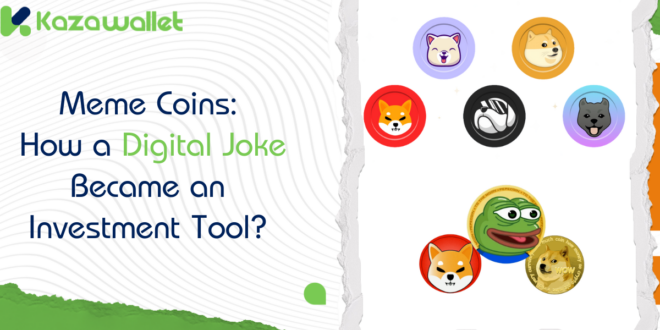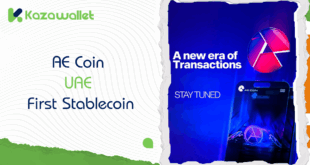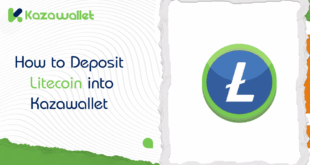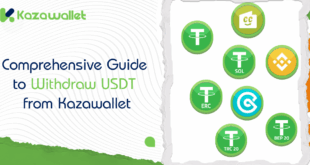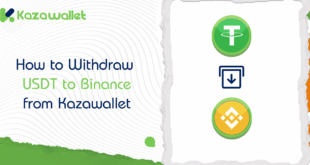Who would have thought that a picture of a laughing dog or a cartoon character could become the foundation for investments worth millions of dollars?
This is the reality of meme coins—those digital currencies that started as jokes but quickly became part of the modern financial landscape.
Distinct from the technical sophistication of classical cryptocurrencies, meme coins have created an exciting experience of investment replete with excitement and risk.
In this article, we’ll talk about what meme coins are, what propelled them into fame, why they have so many followers, and what differentiates them from everything else in finance.
What Are Meme Coins?

Meme coins are cryptocurrencies whose value and usefulness stem from pop culture, humor, cartoon characters, and online memes.
Meme coins are unlike mainstream cryptocurrencies, such as Bitcoin and Ethereum, which use complicated technologies and real-world applications. Meme coins tend to be based on straightforward, humorous concepts.
A good example is Dogecoin, which borrowed its symbol from an internet meme of a viral dog called the Shiba Inu. Due to its playful tone, Dogecoin became one of the best-known digital currencies globally.
So you’re asking yourself: What’s so attractive about meme coins? Simply put, they’re entertaining and straightforward, and they do not demand extensive technical information or knowledge of blockchain.
In brief, think of sharing a joke online, which begins to circulate quickly among friends and acquaintances. Now, think of that identical joke morphing into an online currency to purchase and sell. That’s meme coins in a nutshell.
Just join the community, surf the wave, and have fun.
How Do Meme Coins Work?

What prevents a person today from creating his own virtual currency? Almost nothing. It’s akin to duplicating an existing idea and making changes to it, and putting your own personal twist.
Imagine this: You have an existing cryptocurrency’s open-source code accessible to all, like an open book, copy it in one click, modify its name or logo, and suddenly you’ve created your own coin without hardly any effort.
The initial step is promotion, wherein social networking sites such as Twitter and TikTok are utilized to create gigantic campaigns for grabbing eyeballs.
This is preceded by the hype stage, wherein remarks and hyped-up statements brand the coin as a “financial revolution” or “once-in-a-lifetime opportunity.” Here, tiny investors begin to pour in, tempted by visions of easy gains.
Through recent market booms, this niche has become something akin to an actual circus, replete with unusual and thrilling events.
Day by day, dozens of new currencies pop up—some founded on animal pictures, others named after celebrities or politicians. Remarkably, some reap astronomical returns in record time. only to burst like soap bubbles.
Differences Between Meme Coins and Traditional Cryptocurrencies
While traditional cryptocurrencies rely on complex technologies and clear economic fundamentals, meme coins take a completely different approach. The biggest difference between them is not just in the technology but in the purpose and culture that drives them.
Cultural and Emotional Foundation:
Traditional cryptocurrencies are often designed to solve real-world problems, such as providing secure payment methods or enabling smart contracts.
Meme coins, on the other hand, are based on pop culture and collective emotions. For example, the idea of Dogecoin started as a joke inspired by a famous image of a dog with a funny facial expression.
Community Dependence:
While traditional cryptocurrencies rely on blockchain technology and smart contracts, meme coins primarily depend on their communities.
If a coin has a strong community supporting it, this can lead to a significant increase in its value. For instance, when Elon Musk tweeted about Dogecoin, its value surged dramatically within minutes.
Simple Technology:
Although all digital currencies rely on blockchain technology, meme coins are often simpler from a technical standpoint.
Most do not offer advanced technical features like Ethereum, which enables the creation of decentralized applications (dApps). Instead, meme coins serve more as cultural and social expressions rather than purely technical tools.
Showmanship Factor:
Meme coins are often associated with celebrities or public figures. For example, the Floki coin was named after Elon Musk’s dog, drawing significant attention.
This type of association with famous personalities makes them more appealing to investors looking for “hype” rather than just technical value.
High Volatility:
If you’re looking for stability, meme coins might not be the ideal choice. While traditional coins like Bitcoin may be relatively less volatile, meme coins are known for their rapid and sudden price fluctuations.
How to Buy Meme Coins

If you’re interested in trying your hand at investing in meme coins, here are the steps you can follow:
- Research the Coin: Start by ensuring the coin you want to buy has a clear project, an active community, and a competent development team.
- Choose the Right Trading Platform: Select a trusted platform that supports the meme coin you’re interested in, such as CoinEx or Binance.
- Set an Investment Budget: Only invest money you can afford to lose.
- Create an Account and Deposit Funds: After choosing a platform, create an account and deposit funds using traditional currencies (like USD or EUR) or other cryptocurrencies.
- Buy the Coins: Once your funds are deposited, search for the coin you want to purchase (e.g., Dogecoin, Popcat, etc.) and decide how much you’d like to invest.
- Secure Storage: After purchasing, transfer your coins to a private digital wallet for added security. Digital wallets provide an extra layer of protection compared to those on trading platforms.
- Monitor the Market: Use tools like CoinMarketCap to track prices and market movements.
For further insights, explore our curated list of the top 7 meme coins on the Solana blockchain in the following article:
Top 7 Solana Meme Coins in 2025: Solana’s Hidden Potential!
Pros and Cons of Meme Coins
Pros:
- Low cost compared to traditional cryptocurrencies.
- Potential for small profits through frequent trading.
- Millions of options available, offering freedom of choice.
- Opportunities to join communities of like-minded individuals, making the experience interactive and enjoyable.
Cons:
- Lesser-known coins suffer from low liquidity, making them hard to sell when needed.
- Extreme price volatility.
- Slim chances of long-term success, as most rely on temporary hype.
- Overpromotion is common, making it difficult to distinguish real opportunities from scams.
- Most meme coins lack practical utility or real-world applications, serving merely as trading instruments.
Final Thoughts
The meme coins merge technology and entertainment, and they might be only the start of something bigger.
Whether you want to get in on new developments or merely get an understanding of what’s happening, keep in mind that entertainment isn’t always safe. What is funny today might have hidden risks tomorrow.
So sit back and enjoy—just make sure to establish boundaries for what you’re ready to risk.
 Blog Kazawallet
Blog Kazawallet
